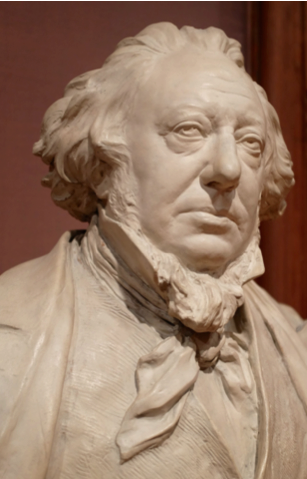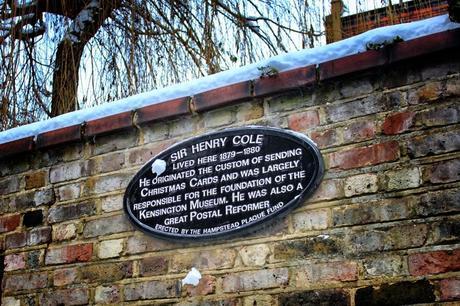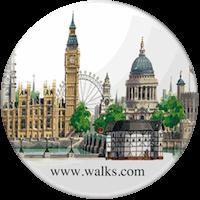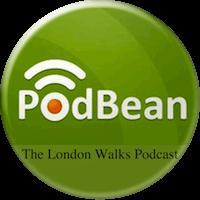Regular Daily Constitutionalists will know that we are posting a Christmas card from London on our blog every day until Christmas Eve.
Henry Cole is the man credited with originating the tradition of the Christmas card, but there's a whole lot more to the man than that.
David Tucker writes… Let’s meet the ancestors.
Well, an ancestor.
A cultural ancestor.
King Cole.
Here he is.

A merry old soul, think you?
How’s the nursery rhyme go?
Old King Cole was a merry old soul And a merry old soul was he; He called for his pipe, and he called for his bowl And he called for his fiddlers three. Every fiddler he had a fiddle, And a very fine fiddle had he; Oh there's none so rare, as can compare With King Cole and his fiddlers three.
Well, I don’t know about merry. And it may be a stretch to see him calling for his pipe and calling for his bowl. I’d say he looks like he means business. Looks earnest. Determined. Looks like he’s taking stock. Looks – in a word – Victorian.
His name is Henry Cole. And this is as good a time as any to meet him. Because amongst other things – amongst many other things – Henry Cole invented the Christmas Card.
Here’s the very first one, the Ur Christmas Card. It went out in 1843.

Ok, it was 177 years ago and for sure Christmas cards have changed a bit. Not just colour – they’re all-singing, all-dancing digital these days. Well, some of them are.
That said, the essential elements are here. In this first ever Christmas card. Christmas of 1843.* There’s family and food and drink and a festive time being had by all.
The Christmas card’s just an entrée. Of much greater interest is King Cole himself. And what he accomplished. The difference he made.
And yes, they really did call him King Cole. It was an acknowledgement of his power in the small kingdom of South Kensington.
He was born Henry Cole. (He died Sir Henry Cole.) The bookend dates are 1808 and 1884. He started life in Bath. Son of an army officer, he was educated at Christ’s Hospital school. Upon leaving school he got a job as a clerk, in the Record Commission. Fell out with his employer over his, Cole’s, salary. Decided to tip the whole damn apple cart over. The Record Commission at the time was a hotbed of corruption and jobbery. Cole went public with the shenanigans. An unlimited dirty linen hangout in a series of articles for The Examiner. Cost him his job. Temporarily. Parliament was embarrassed into doing something about the mess and when the reforms were put in place Henry Cole was reinstated.
The important thing – the big picture thing – was that he’d found his calling. He was formidable. Wouldn’t be put off. Had some vision. Was one of the great organisers of the age. Abilities fueled by boundless reserves of energy.
Here’s a checklist. The London – and indeed the country, the culture – that Henry Cole built. I think you’ll agree the Christmas card was small beer in comparison with the biggies in this list.

• Along with Rowland Hill, Henry Cole was the prime mover behind the introduction of a national prepaid postage system.
• He was a mover and shaker in the world of Victorian railways. Produced a series of railway charts and wrote articles on railway excursions. Campaigned for the introduction of the uniform narrow gauge and the separation of freight from passenger traffic.
• Authored a series of illustrated children’s books. And campaigned for an adequate education and good occupational opportunities for girls.
• Was at the center of the group that organized the 1851 Great Exhibition. He was promoter, publicist and administrator. He was the guy who sorted it. Allocated space for the 14,000 exhibitors from Britain, 11 colonies and 14 foreign countries.
• Then led the fight to save the Crystal Palace from dismantlement after the GE was over.
• The Great Exhibition turned a healthy profit. The money was used to buy land in Brompton, just south of the Great Exhibition site in Hyde Park. Prince Albert, the Great Exhibition’s royal figurehead hoped the site could be used to carry on with the work of the Great Exhibition: “the promotion of industry and the arts.” Henry Cole was the man who turned the vision into reality – he spent the next 20 years of his life turning South Kensington into a national center for the arts and sciences. The V & A, the Natural History Museum, the Science Museum, the Geology Museum, etc. – it’s surely the greatest museum complex in the world. We’ve got Henry Cole to thank for it.
• He did important work for the schools of design that had been set up in the 1830s. Just for the fun of it he designed a tea service that won a Society of Arts prize.
• After “retirement” he set up the National Training School for Music. And the National Training School for Cookery.
• He was the driving force behind “the nation’s village hall” – the Royal Albert Hall.
Sewage, army reform, copyright, patent law also came under his purview. In his spare time, that is.
Well, you get the idea. Thomas Carlyle once said, “I have found that the Portrait was a small lighted candle by which the Biographies could for the first time be read, and some human interpretation be made of them.” Bearing that in mind – and having taken survey of Henry Cole’s life’s work – maybe now scroll back up to the “portrait”, the bust. King Cole, indeed. Henry Cole was, to borrow the Marlene Dietrich character’s line about Quinlan (played by Orson Welles) in the great film Touch of Evil, “some kind of man.”
*That may have been the second most memorable Christmas of all – because it was also the year of Dickens’ novella, A Christmas Carol.
A London Walk costs £9 – £7 concession. To join a London Walk, simply meet your guide at the designated tube station at the appointed time. Details of all London Walks can be found at www.walks.com.












